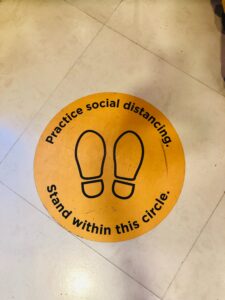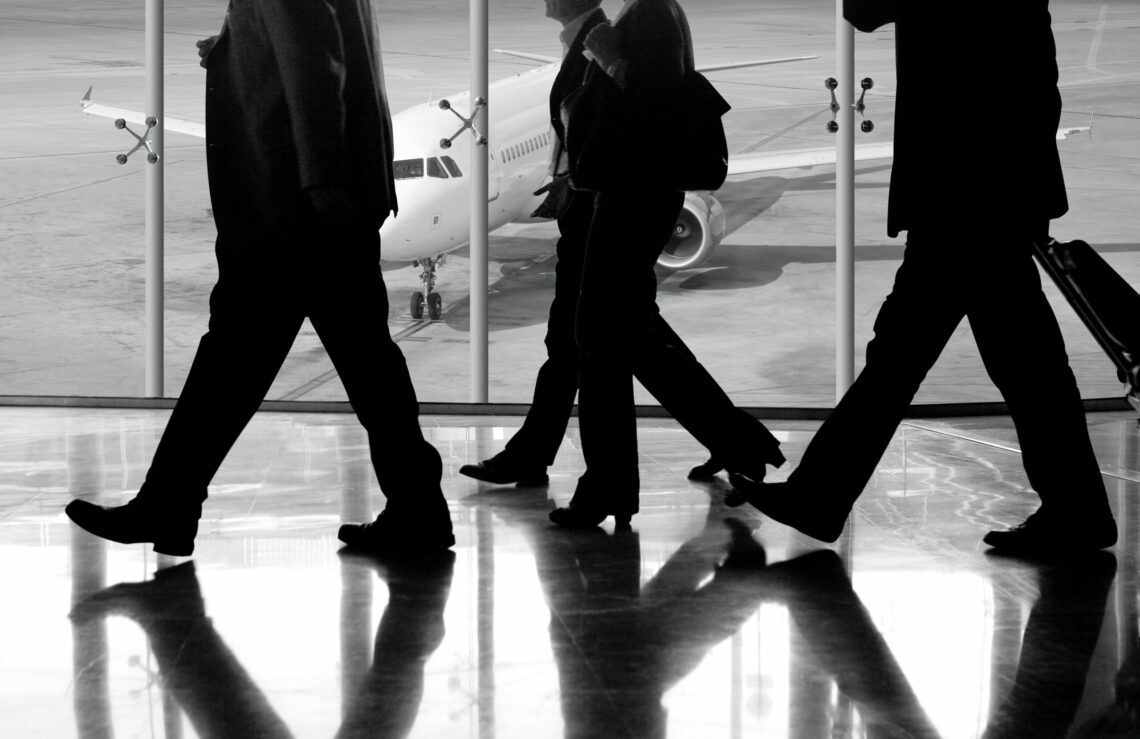Last Updated on November 28, 2025
As we near the light at the end of a long, winding tunnel that has gripped the world in its vices for the last 24 months, the future seems uncertain. With new COVID variants springing up and dying down periodically, the corporate world seems to be limping back to normalcy, albeit with some amount of difficulty.
Of all the industries that were adversely affected by the pandemic, the travel industry was probably a standout. Corporate travel came to a literal standstill, and companies had to redefine their policies to empower their workforce and ensure business continuity.
With Travel and Expense (T&E), one of the largest expenditures in every company’s balance sheet, undergoing a tectonic shift, it is apparent that CFOs have to evolve their strategies and adopt a constant scenario planning methodology to accommodate these changes. The pandemic has introduced a host of new variables which need to be taken into account to ensure a seamless set of T&E processes. The process of re-drafting fresh T&E policies will have to include multiple considerations, ranging from including clear guidelines on work-from-home expenses, to the inclusion of geography-specific travel guidelines, according to the restrictions of that part of the world.
CFOs and travel managers have to set the ball rolling and act quickly to improve existing T&E policies and include the new travel realities in their list of considerations. It is a well-known fact that strong and resilient policies are the backbone of a robust expense management infrastructure. That said, a clear understanding of underlying compliance and safety issues will help in the quicker drafting of fresh, dynamic T&E policies.
Trends in T&E post-COVID:
The New Corporate Traveler
For the first time since 2008, the role of the CFO and the finance department are under a constant spotlight. In a time of utmost crisis, the CFO has had to prioritise working capital management, maintain liquidity in times of near-zero business, and has had to face the dual challenge of allocating greater resources for customer engagement as well as employee engagement.
One of the new realities that CFOs and travel managers have to face head-on is the changing nature of corporate travel. McKinsey has identified 4 different segments of business travellers, meant to determine the travel resilience (the criticality of business travel) for each segment. Business profiles have been widely divided into the never left segment, for whom travel is deemed essential; the never returning segment, which includes employees who have successfully transitioned to a remote digital work model and don’t need to travel; the FOMO (Fear of Missing Out) segment, which fuels more than 3/5th of all business travel, and mostly travel to cultivate customer relationships; and then wait and see the segment, which comprises of workers in non-competitive roles and industries, travelling mostly for internal collaboration
The division of corporate travellers into these segments can help companies in identifying essential and non-essential travel and incorporate the same into their T&E policies. Clear segregation of essential and non-essential travel, and internal and external travel, can not only streamline approval processes but also lead to better cost savings since the need for internal travel has essentially been eliminated with the introduction of digital collaboration tools.
Business Travel: Bouncing Back
Business Travel was more affected than leisure travel during the pandemic, especially owing to an increase in digital adoption and workplace flexibility. While a full recovery is unlikely till 2024, the Global Business Travel Association predicts more than a 37% increase in business travel spending in 2022. Of course, the road to recovery for business travel is expected to be slower than leisure travel. While these estimates may be marred by the ever-evolving nature of the pandemic, it does mean that business travel will limp back to normalcy, albeit slowly. That said, vaccine rollout rates are bound to affect corporate travel, and vaccination rates will affect country travel policies as well. In addition, companies may have to take into account the personal choice of employees to travel or not to travel and include the same in their policies.
The Increasing Risk of Fraud:
With a greater number of employees working from home, the number of online transactions has seen an unprecedented rise. As such, Business Travel News has reported a 207% y-o-y increase in spend violations, and a significant increase in the risk of fraud due to contactless, online transactions that are reported wrongly. As such, expense policies need to be drafted in a manner that ensures complete control over the diverse quantum of employee expenses. While implementation of mobile, cloud-based T&E management systems is the right step in the direction of ensuring visibility into remote transactions, the underlying T&E policies need to be well-defined, especially for remote work scenarios.

Building a resilient and dynamic T&E Policy:
With the ever-changing behaviour of the modern workforce, employee well-being needs to go hand-in-hand with profitability. As such, while drafting a T&E policy with an eye on the evolving pandemic situation, three primary considerations need to be kept in mind:
Safety:
Employee well-being needs to be a top priority for the modern enterprise in the post-COVID era, and with that in mind, expense policies need to have specific outlines for high-risk travel and low-risk travel, essential, and non-essential travel. Accommodating work from home expenses for at-risk employees, and setting aside expenses for sanitation of office environments are just some of the new considerations that have to be included in revamped T&E policies. Including
Flexibility:
The ever-evolving nature of the pandemic and the accompanying change in travel restrictions globally can lead to multiple scopes for improvement in even your revamped T&E policies. As such, the need for constant scenario planning, and a continual review and updating of existing policies is paramount. As such, leaving the scope for flexibility in your T&E policies becomes important. One of the primary measures of knowing how effective your existing T&E policies are is by sourcing feedback from the end-user, i.e., the employees themselves.
Compliance:
One of the primary drivers behind increased compliance is clarity in communication. Limited awareness of T&E policies leads to the submission of non-reimbursable claims and results in non-compliance. To enable better compliance, conglomerates like the Tata Group follow a gamification-based approach, founded on the pillars of a clearly defined T&E policy, mobility-enabled expense management, and an interactive T&E platform. Setting up virtual workshops, and making your T&E policy easily accessible to your entire workforce will ensure better compliance, especially at a time when a majority of your workforce is remote.
Considerations while drafting a new T&E policy
Assessing Existing Policies:
A revamped T&E policy needs to be built on the bedrock of existing T&E policies. A complete audit of your existing policies is a logical first step since it will help in identifying the loopholes and key considerations that were not taken into account before the pandemic. Completing a comprehensive audit of your travel and expense management setup will go a long way in setting up robust and streamlined policies that tick all of the management’s and the employees’ expectations.
International Travel Policies:
Given that business, travel is still going to be severely limited by the ongoing restrictions, and further curtailed due to the fear of new variants like Omicron, companies may need to take a granular approach to limit business travel. While the approach followed by McKinsey goes on to segment corporate travellers into wider segments, companies may go a step further and identify critical employees who need to travel and earmark the number of trips and duration of trips that they are allowed to partake in. In addition, for travellers who can seek an alternate, digital route to travel, clear policies need to be outlined for expenses incurred in digital conferences or remote setups. The bottom line is that there may be a marked shift from cost savings in corporate travel, to the safety of the traveller, and companies may have to reflect the same in their policies as well
One of the primary considerations, as discussed before, is the fact that travel restrictions vary from country to country, due to varying infection and vaccination rates. For an instance, while India has banned international travel till further notice, special air bubble agreements have been signed with more than 30 nations. As such, any form of international business travel warrants identification of high-risk, high restriction countries, flagging of visits to such locations, and specific travel policies, including provisions for connecting flights and safe routes for such locations.
Accommodation Policies:
Given that corporate hotels are witnessing a comeback after a measly 20 months, accommodation rates are bound to increase. As such, limits on accommodation prices need to be updated in T&E policies, keeping in mind the need for safe travel and safe stay. In addition, hotels are making sure that they report sanitisation measures in various booking forums. Sanitised accommodations need to be prioritised for travelling employees, and T&E policies need to be formulated to ensure the same while accounting for any additional expense that such measures may entail. In addition to this, several countries have imposed self-isolation and quarantine policies, which would mean incorporating additional accommodation expenses to ensure adherence to these guidelines. The diversity of such restrictions would require finance teams to take a granular approach toward defining policies according to geography
Empowering alternate travel:
A unique way in which companies are enabling safe travel is by including clearly defined policies for travelling by road. With pooled travel by air or rail becoming a health risk, companies are defining documented expense claim policies for long-distance road travel as well. Short-distance trips can be enabled by allowing for road travel, but such policies need to be very clearly illustrated, in terms of the type of vehicles being used, the fuel reimbursement costs, rental cost, minimum and maximum trip distance and trip duration, etc.
Work from Home Policies:
With workforce flexibility dubbed the future of work, modern T&E policies may have to expand their scope to include guidelines for enabling remote working employees and ensure better clarity and visibility into these expenses. Companies taking into account the remote work necessities of their workforce often find a concurrent increase in their employee productivity. That said, there needs to be clarity in the expenses claimed while enabling at-risk employees to work from home.
Defining Medical Expenses during travel:
Periodic PCR and Antigen Tests for corporate travellers have become part of the new reality. And so have multiple other medical requirements, including the need to procure PPE Kits and other sanitary measures. Revamped T&E policies may need to ensure a streamlined approval process to authorise and approve these expenses.
Optimising Travel Outcomes: The Key to Future proof T&E Policies
While compromising cost savings may be in favour of the safety of the workforce, the modern CFO needs to shift focus to streamlining travelling, accommodation, and outcomes. For most companies, this would indicate a monumental shift from legacy-based setups to modern cloud-based travel and expense management solutions that can capture financial interactions on the go, and in real-time. Real-Time Interaction Management based T&E tools are bound to capture the imagination of a large segment of the enterprise market, and most likely, future T&E policies will be framed around these tools too.
While the future remains uncertain, with the recovery of business travel, companies must draft and communicate T&E policies that enable business continuity in these troubled times. Here are some things you may consider:
- Reassess existing policies, and based on current/future scenarios, consider the T&E policies that may need modifications.
- It may be smart to assess the action of your peers and competitors as they adjust to the changing times. So, ask yourself- How are other big conglomerates making changes in their policies?
So, as a modern CFO, introspect and assess the current stack, identify loopholes, and implement guidelines, policies and supporting technologies that help rebuild a robust, future-proof T&E infrastructure.










Discussion about this post